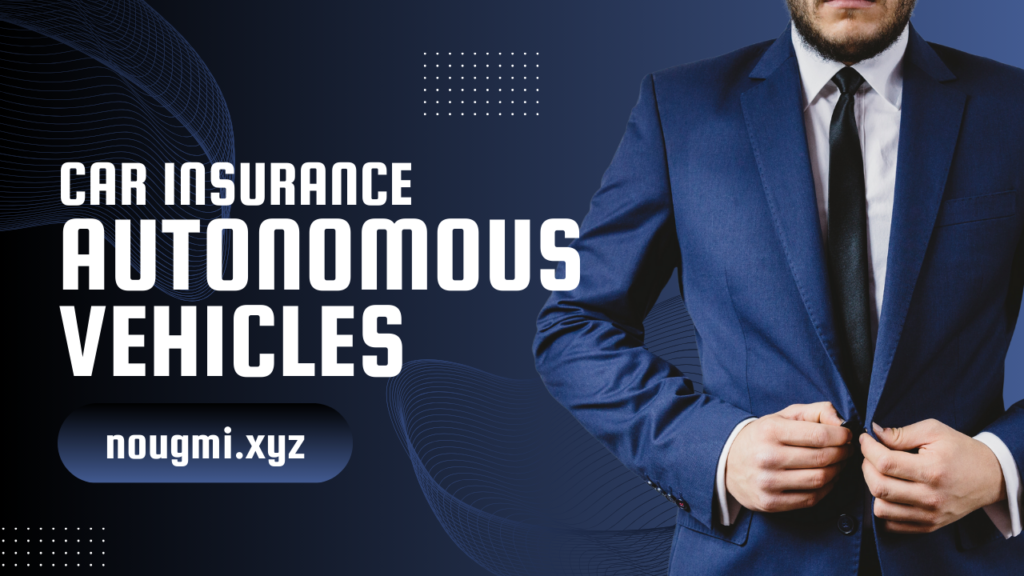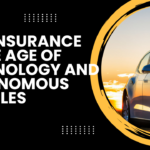Understanding Autonomous Vehicles
Autonomous vehicles, also known as self-driving cars, represent a groundbreaking advancement in the automotive industry. These vehicles utilize a combination of sensors, cameras, radar, and artificial intelligence to navigate and operate without human intervention. The development of autonomous vehicles has the potential to significantly alter various aspects of society, including the car insurance industry.
There are different levels of vehicle automation, ranging from Level 0 (no automation) to Level 5 (full automation). Level 2 and Level 3 vehicles, which include features such as adaptive cruise control and lane-keeping assistance, still require human oversight. Level 4 vehicles can operate autonomously under specific conditions, while Level 5 vehicles are fully autonomous and capable of handling all driving tasks without human input.
The primary promise of autonomous vehicles is increased safety. Human error is a leading cause of road accidents, and autonomous vehicles aim to reduce these errors through advanced technology. By minimizing driver-related risks such as distracted driving, fatigue, and impaired driving, autonomous vehicles have the potential to significantly decrease the number of accidents on the road.
The Impact on Car Insurance
The widespread adoption of autonomous vehicles is poised to disrupt the car insurance industry in several ways. Traditional insurance models, which are based on human driving behaviors and historical risk data, will need to adapt to the new realities of autonomous driving.
Changes in Risk Assessment
- Shift in Liability: One of the most significant changes will be the shift in liability from the driver to the manufacturer or the software developer. In the event of an accident involving an autonomous vehicle, the question of fault will likely center around the vehicle’s technology and software, rather than the human operator. This shift in liability will require insurers to develop new risk assessment models that account for the reliability and performance of autonomous systems.
- Reduction in Claims: With the potential for autonomous vehicles to reduce accidents caused by human error, insurers may see a decrease in the frequency and severity of claims. This could lead to lower premiums for consumers and a reduction in overall insurance costs. However, the cost of repairing autonomous vehicles, which are equipped with sophisticated technology and sensors, may be higher, potentially offsetting some of the savings from reduced claim frequency.
- New Types of Coverage: The advent of autonomous vehicles will necessitate the creation of new insurance products and coverage types. For instance, product liability insurance for manufacturers and software developers will become more important. Additionally, coverage for cybersecurity risks, such as hacking and data breaches, will be crucial as autonomous vehicles rely heavily on connected technology.
Data and Telematics
The integration of telematics and data analytics will play a crucial role in the insurance of autonomous vehicles. Telematics devices can monitor the performance of autonomous systems, collect data on vehicle usage, and provide insights into potential risks and vulnerabilities.
- Data-Driven Policies: Insurers will leverage the vast amounts of data generated by autonomous vehicles to create more accurate and personalized insurance policies. This data can include information on the vehicle’s operation, maintenance, and adherence to safety protocols. By analyzing this data, insurers can offer customized coverage and pricing based on the specific risk profile of each vehicle.
- Real-Time Monitoring: Telematics enables real-time monitoring of autonomous vehicles, allowing insurers to detect and respond to potential issues proactively. For example, if a vehicle’s sensors indicate a malfunction or deviation from safe driving patterns, insurers can intervene before an accident occurs, reducing the likelihood of claims and enhancing overall safety.
Regulatory and Legal Considerations
The regulatory landscape for autonomous vehicles is still evolving, and insurers will need to navigate complex legal frameworks to provide adequate coverage. Governments and regulatory bodies are developing standards and guidelines for the testing, deployment, and insurance of autonomous vehicles.
- Standardization of Regulations: Consistent and standardized regulations across different regions will be essential for the widespread adoption of autonomous vehicles and the development of insurance products. Insurers must stay abreast of regulatory changes and ensure compliance with evolving requirements.
- Insurance Requirements: As autonomous vehicles become more prevalent, regulatory bodies may impose specific insurance requirements for manufacturers, software developers, and vehicle owners. These requirements will likely include minimum coverage levels, liability provisions, and protocols for data sharing and cybersecurity.
Future Trends and Challenges
The future of car insurance in the era of autonomous vehicles will be shaped by several emerging trends and challenges. Insurers, manufacturers, and policymakers must collaborate to address these issues and harness the potential benefits of autonomous technology.
Emerging Trends
- Collaboration Between Insurers and Manufacturers: Insurers and autonomous vehicle manufacturers will need to work closely to develop comprehensive insurance solutions. This collaboration can include sharing data on vehicle performance, jointly developing risk assessment models, and designing coverage that addresses the unique risks of autonomous technology.
- Cybersecurity Measures: As autonomous vehicles rely on connected systems, robust cybersecurity measures will be critical to prevent hacking and data breaches. Insurers will need to offer coverage for cybersecurity risks and work with manufacturers to implement strong security protocols.
- Public Perception and Acceptance: The adoption of autonomous vehicles will depend on public perception and acceptance. Insurers can play a role in educating consumers about the safety benefits and risks of autonomous technology, thereby fostering trust and confidence in these vehicles.
Challenges
- Complex Liability Issues: Determining liability in accidents involving autonomous vehicles can be complex, especially when multiple parties, such as manufacturers, software developers, and vehicle owners, are involved. Insurers will need to develop clear protocols for assessing fault and managing claims in such scenarios.
- Evolving Legal and Regulatory Landscape: The legal and regulatory framework for autonomous vehicles is still in flux. Insurers must stay informed about legislative developments and ensure their policies comply with new regulations. This dynamic environment may require frequent adjustments to insurance products and pricing.
- High Cost of Technology: The advanced technology used in autonomous vehicles, including sensors, cameras, and AI systems, can be expensive to repair or replace. Insurers will need to factor these costs into their pricing models and coverage options, potentially leading to higher premiums for consumers.
The rise of autonomous vehicles represents a transformative shift in the automotive and insurance industries. While the promise of increased safety and reduced accidents is significant, the transition to autonomous driving brings a host of new challenges and opportunities for insurers. By embracing data-driven policies, collaborating with manufacturers, and navigating the evolving regulatory landscape, insurers can develop innovative solutions that meet the unique needs of autonomous vehicle owners. As technology continues to advance, the car insurance industry must remain adaptable and forward-thinking to fully realize the potential benefits of autonomous vehicles.

